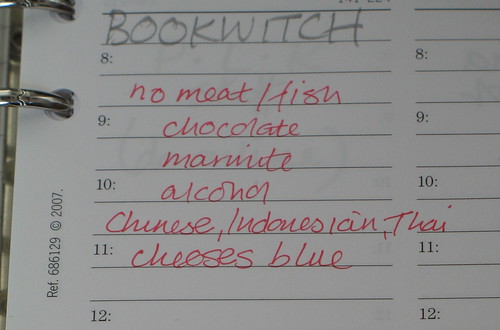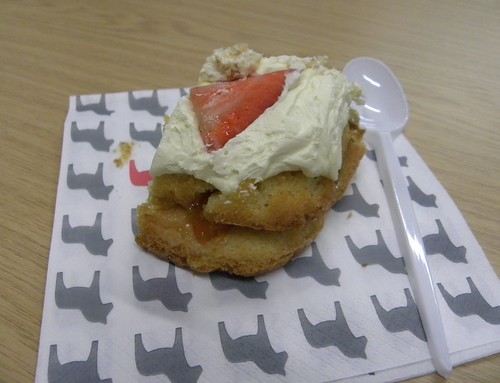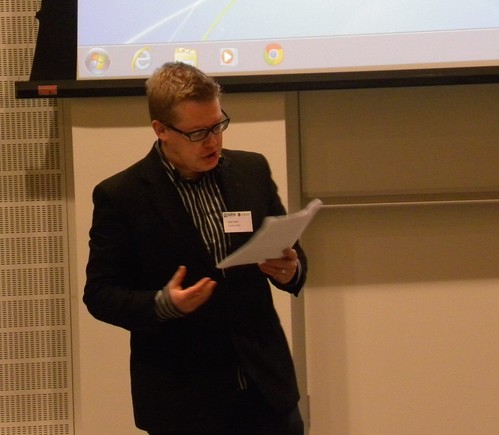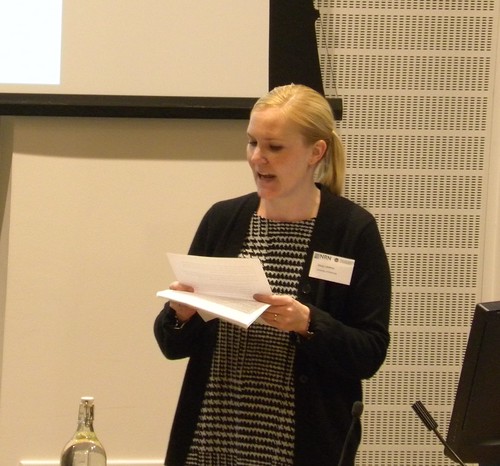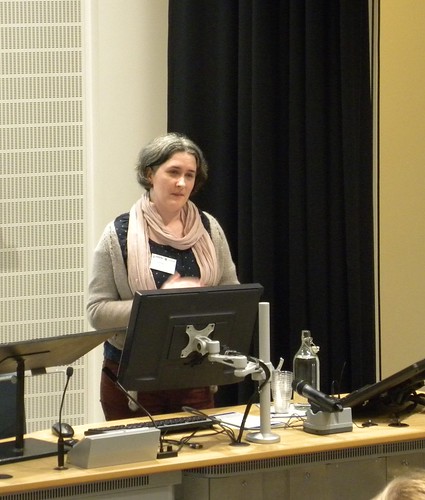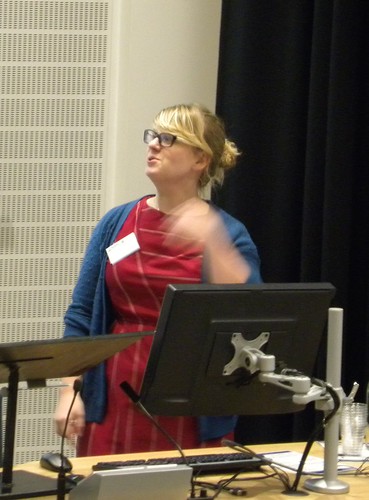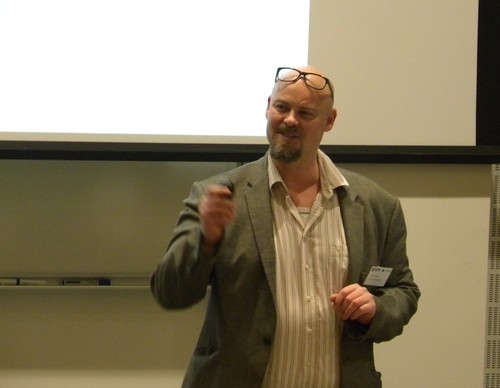Remember Maria Parr? I read her Waffle Hearts a couple of weeks ago, and here she was, at the NRN conference, along with fellow Norwegian (well, half, anyway, and a quarter Dane and a quarter Swede, unless I misunderstood the maths) author Harald Rosenløw Eeg and Danish Merete Pryds Helle. They had come to talk about their writing, as well as take part in the discussion on reading translated children’s fiction.
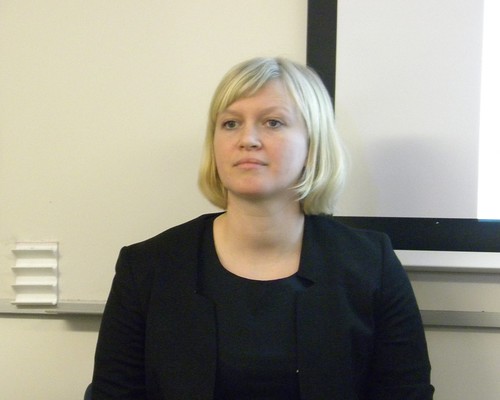
Maria read from Waffle Hearts (with her translator Guy Puzey right there in the room) in English, and then in Norwegian. I didn’t understand a word of the latter (well maybe a little, since I had actually read the book) as Maria’s accent is very hard to understand.
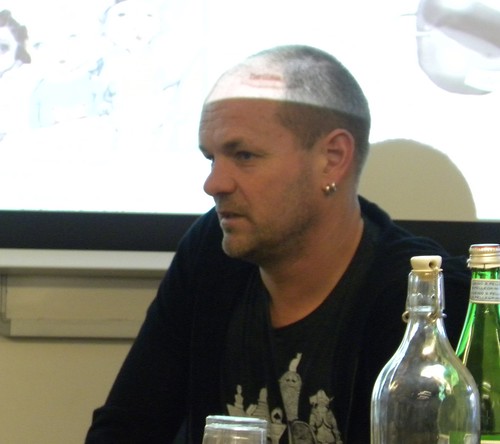
Nordic mix Harald came next, saying how Jostein Gaarder paved the way with Sophie’s Choice twenty years ago, showing that you can do anything you want. He didn’t feel he wrote YA, but simply wrote to please himself, in a Catcher in the Rye way. He’s grateful for the Norwegian state support to writers, which in effect means they get a sort of minimum wage. Harald read from his untranslated Leave of Absence, a novel inspired by a forgotten rucksack on the Oslo underground, which he’d finished just before the 22nd July 2011. His book felt too close to reality, so he changed a few things after the Oslo bombs. He said he speaks Nynorsk (New Norwegian) but writes in ‘Ordinary Norwegian.’
Merete went from ordinary adult fiction to what she calls digital fiction for children. She has tried a variety of techniques or media, and has settled on apps for iPads. She showed us one ‘book’ featuring children from all the Nordic countries, where the reader would start by choosing their language, and then the characters would meet and talk to each other, and you could learn to recognise different languages.

By asking an IT friend what you can do with iOS 8, Merete then wrote stories to fit the technical frames, which could mean (does mean) that the reader might need to shake their iPad violently in order to make the pine cones fall off the tree. Or you could light up the forest by showing your iPad something yellow. Very effective. She had a more traditional looking picture book, where the child can see themselves, and get to choose what happens next (like meeting pandas in China, or ending up on a pirate ship).
If you’d asked me beforehand, I’d have said this didn’t sound like anything that I’d be interested in. If you ask me now, I’d have to say it looked brilliant.
The discussion moved to films, and Maria said she was lucky with the Waffle Hearts film. Harald reckons you have to let others do their work, and that once there is a film, you will never get your characters back. Merete does choose the illustrators for her digital books, but not the voices. And her multiple choice advent calendar has four endings, but also two set days when the choices end up the same, to restore order.
As for language and dialects, that’s a big deal in Norway, while Merete reckons there are barely any regional accents in Danish. People use social accents more, and switch to mainstream Danish when it’s required. Maria is always asked if Nynorsk is important to her writing, which she thinks is strange, because it is simply what’s natural and normal. Harald’s children are better at English than the ‘other Norwegian.’

After a break for air – and more cake – we continued with the translation side of things, where the authors and Guy were joined by translator Kari Dickson, who volunteered that she has done ‘a lot of crime.’
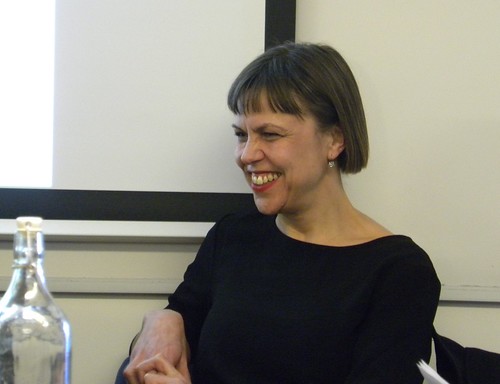
Too few books in the UK are translations. 2% here as opposed to maybe 30% in Europe. And as Daniel Hahn discovered when he counted books in a bookshop recently, children’s books fare even worse. Kari feels it’s important to read foreign books to help a better understanding of other people and countries.
We were asked about the first translated books that we were aware of reading as children. Astrid Lindgren came first for many, and both Harald and Maria loved Saltkråkan. Roald Dahl is big in Norway. Merete didn’t read Lindgren, but Laura Ingalls Wilder and Agatha Christie (at age 7-8), and Dickens, and she feels Danish children’s fiction is too harsh and doesn’t like it. Guy enjoyed Babar, and discovered Pippi Longstocking at university.
Others mentioned more Lindgren, Paddington, Jules Verne and Alexandre Dumas. There was the young Swede whose mother made her her read books about Africa and Vietnam, with not a single Donald Duck anywhere…
And then the peripheries where we live re-appeared in the debate, except for Merete who pointed out that Denmark is the centre of the world, and how her characters dig all the way to China.
Translating picture books is like writing the book from scratch a second time, because the translator has to work out how to make the original shift into another language. Harald’s opinion was that the translator might as well write their own stuff, as he won’t be able to read it anyway.
Squeaking wet snow is a problem. A lot of Nordic fiction describes things that the receiving language and country might not have. London is well known to most, but what the hamlet in Waffle Hearts looked like will be almost unknown, even to people in Oslo.
The session ended with the Norwegian authors saying we need real books to relax with on long journeys, and Merete disagreeing and saying how she would have loved an iPad as a child.
So, we’re all different, but we would benefit from reading each other’s fiction, travelling in our minds, making us feel calmer.


